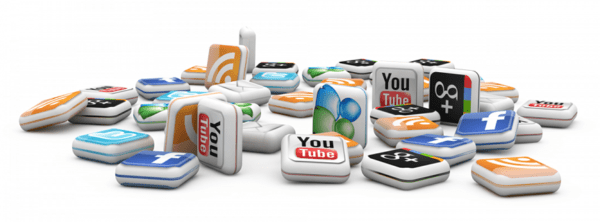Creating a Facebook group is just...
Read More
Introduction
Are you curious about the digital media landscape of the past 10 years? It’s been an amazing journey of transformation, innovation and disruption. From the rise of social media to the birth of new digital technologies, the past 10 years have been an exciting time for digital media.
In this blog post, I’ll be taking you through a journey of digital media over the past 10 years. We’ll explore how digital media has transformed our lives, how it has changed the way we interact with one another, and how new technologies and platforms have emerged to shape the digital media landscape.
So if you’re interested in learning more about the digital media of the past 10 years, then read on! I’m sure you’ll find something new and exciting to discover. And don’t forget to subscribe to my newsletter for more updates and insights.
The Evolution of Digital Media
Digital media has come a long way since its inception, revolutionizing the way information is shared and consumed. The roots of digital media can be traced back to the 1950s when computers were first used to store and manipulate data. However, it wasn’t until the 1990s that the internet became widely accessible to the public, paving the way for the rapid expansion of digital media.
The emergence of social media platforms such as Facebook, Twitter, and Instagram in the early 2000s further propelled the evolution of digital media, allowing individuals to connect and share content on a global scale. This shift in communication and information dissemination has had a profound impact on various industries, including journalism, advertising, and entertainment.
The rise of digital media has also led to the decline of traditional print media, as more people turn to online sources for news and entertainment. The accessibility and convenience of digital media have made it the preferred choice for many, leading to a decline in the sales of newspapers and magazines.

As technology continues to advance, the future of digital media looks promising. Virtual reality, augmented reality, and artificial intelligence are just a few of the emerging technologies that are shaping the next phase of digital media. These innovations have the potential to further revolutionize the way we consume and interact with digital content, opening up new possibilities for storytelling and immersive experiences.
In conclusion, the evolution of digital media has transformed the way we communicate, consume information, and entertain ourselves. From its humble beginnings in the 1950s to the present day, digital media has become an integral part of our daily lives, and its impact will only continue to grow in the years to come.
Social Media
Social media has revolutionized the way we communicate and interact with each other. It has enabled us to connect with people from all around the world, share our ideas, and engage in conversations with others in a matter of seconds. But is this really a good thing? Let’s take a look at the pros and cons of this revolutionary communication platform.

The Pros:
One of the biggest advantages of social media is the ability to stay connected with friends and family. Whether you’re across the world or just across town, social media allows you to keep in touch with your loved ones. You can share photos, have conversations, and even send messages from one device to another. It’s a great way to stay connected with people who are far away.
Social media also allows us to share our ideas and opinions with a much larger audience. We can post our thoughts, opinions, and ideas on our own pages, or join groups and forums to discuss topics with like-minded people. This can be a great way to learn new things and get feedback from other people.
Another great thing about social media is that it’s free. You don’t have to pay anything to join or use the platforms. This makes it accessible to everyone, regardless of their financial situation.
The Cons:
Unfortunately, social media can also be a double-edged sword. While it can be a great way to stay connected, it can also be a source of distraction. It can be easy to get lost in the endless scrolling, and it can be hard to focus on the task at hand.
Social media can also be a breeding ground for cyber bullying. People can be cruel and say things they wouldn’t say to someone’s face. This can be damaging to a person’s self-esteem and can lead to depression and anxiety.
Finally, there is the issue of privacy. Many social media platforms have lax privacy policies, which can lead to your personal information being shared without your consent. This can be a huge problem, as it can lead to identity theft and other issues.
The Bottom Line:
Social media is a great way to stay connected with friends and family, share ideas, and engage in conversations. But it can also be a source of distraction, cyberbullying, and privacy issues. It’s important to be aware of the pros and cons of social media before diving in head first. Use it wisely, and you’ll be able to reap the benefits without the negatives.
Evolution of Social Media in 2024: A Trend Analysis for Entrepreneurs
As we look ahead to the year 2024, it is clear that social media will continue to play a crucial role in the way businesses connect with their customers. The landscape of social media is constantly evolving, and it is important for entrepreneurs to stay ahead of the trends in order to effectively market their products and services. In this article, we will explore the key trends that are shaping the evolution of social media in 2024 and how entrepreneurs can leverage these trends to grow their businesses.
One of the most notable trends in social media in 2024 is the rise of short-form video content. Platforms like TikTok and Instagram Reels have gained immense popularity, and entrepreneurs are finding creative ways to engage their audiences through these short, attention-grabbing videos. As a result, businesses are increasingly investing in video content production and incorporating it into their social media marketing strategies.

Another trend that is shaping the future of social media is the growing importance of social commerce. In 2024, we are seeing a shift towards social media platforms becoming not just places to connect with friends and family, but also to discover and purchase products. Entrepreneurs are capitalizing on this trend by creating seamless shopping experiences for their customers directly within social media apps.
In addition to short-form video content and social commerce, the use of augmented reality (AR) and virtual reality (VR) in social media is also on the rise. These technologies are allowing businesses to create immersive and interactive experiences for their audiences, ultimately driving higher engagement and conversion rates. Entrepreneurs who embrace AR and VR in their social media strategies will have a competitive edge in 2024.
Furthermore, the rise of niche social media platforms is also a trend to watch in 2024. As larger platforms become increasingly saturated, entrepreneurs are turning to niche platforms that cater to specific interests and demographics. This allows businesses to target their marketing efforts more effectively and connect with highly engaged, niche communities.

Self-Driving Cars/Vehicles:
We live in an age of technological innovation and advancement. Every day, new and exciting products, services, and ideas are being developed to make our lives easier and more efficient. One such innovation that has recently been making waves is the introduction of self-driving cars.
Self-driving cars are not only a revolutionary concept, but they also have the potential to revolutionize the way we travel. But with all new technologies, there are pros and cons to consider. So let’s take a look at some of the pros and cons of self-driving cars.
The Pros:
One of the major advantages of self-driving cars is that they can help reduce the number of accidents on the road. As they are able to detect potential hazards and react accordingly, they can help make roads safer for both drivers and pedestrians.
In addition, self-driving cars can also help reduce traffic congestion. As they are able to drive more efficiently than human drivers, they can help reduce the amount of time it takes to get from one place to another. This could potentially reduce traffic jams and make our roads more efficient.
Finally, self-driving cars could also help reduce the cost of transportation. As they are able to drive more efficiently, they can help reduce fuel costs and maintenance costs. This could potentially make transportation more affordable for everyone.
The Cons:
Although self-driving cars have a lot of potential benefits, there are also some potential drawbacks. One of the biggest concerns is the potential for accidents. As self-driving cars are still in the early stages of development, there is a chance that they could malfunction or make mistakes that could lead to serious accidents.
In addition, there is also the potential for privacy issues. As self-driving cars are able to collect large amounts of data, there is the potential for this data to be misused or abused. This could potentially lead to serious privacy concerns.
Finally, there is also the potential for job losses. As self-driving cars become more common, they could potentially replace human drivers, leading to job losses in the transportation industry.
Conclusion:
Self-driving cars have the potential to revolutionize the way we travel and make our roads safer. However, there are also potential drawbacks to consider, such as the potential for accidents, privacy issues, and job losses. Ultimately, it’s up to each individual to decide whether the pros outweigh the cons when it comes to self-driving cars.

FAQ's
FAQ 1: How has digital media changed over the past decade?
Answer: Over the last 10 years, digital media has undergone significant transformations. We’ve seen a shift from traditional to online platforms, the rise of social media influencers, the dominance of video content, and advancements in technologies like augmented reality. These changes have reshaped how we consume and interact with information.
FAQ 2: What role have social media platforms played in the evolution of digital media?
Answer: Social media platforms have played a pivotal role in the evolution of digital media. They have become primary channels for content distribution, news dissemination, and brand promotion. The past decade saw the rise of platforms like Instagram, Snapchat, and TikTok, influencing trends and shaping digital communication.
FAQ 3: How has the rise of mobile technology impacted digital media consumption?
Answer: The proliferation of mobile devices has significantly impacted how we consume digital media. Mobile technology has led to an increase in on-the-go content consumption, the popularity of mobile apps, and the development of responsive website designs. This shift has prompted content creators and marketers to prioritize mobile-friendly strategies.
FAQ 4: What are some emerging trends in digital media for the future?
Answer: Emerging trends in digital media include the growing influence of artificial intelligence, the rise of interactive content such as virtual reality experiences, and the increasing importance of user-generated content. Personalization and data privacy are also becoming central themes, shaping the future landscape of digital media.
FAQ 5: How have digital media platforms adapted to the changing landscape over the past decade?
Answer: Digital media platforms have adapted by continuously innovating their features and algorithms. They have embraced video content, implemented live streaming capabilities, and introduced features like Stories. Additionally, platforms have focused on enhancing user experience, combating misinformation, and providing tools for content creators to engage with their audiences more effectively.
FREE! Special Report
Don't Think About What Might Go Wrong
Think About What Might Go Right!
Ready to supercharge your content creation?
Available Free for Limited Time Only
Our Recent Articles
Keto Kitchen Essentials: Stocking your...
Read More
We appreciate you taking the time to read our content.
We hope you found it informative and valuable.
Please dont forget "Sharing is Caring

Affiliate Disclosure:
This website may contain affiliate links, which means we may earn a commission if you make a purchase through these links. We only recommend products or services that we believe will add value to our readers. The commissions earned through these links help support the content we create and maintain on this website. Please note that this does not affect the price you pay for any products or services purchased through these affiliate links. Your support is greatly appreciated, and we strive to provide honest and unbiased information to assist you in making informed decisions.
Disclaimer:
This content reflects the personal opinions of the author. It is accurate and true to the best of the author’s knowledge and should not be substituted for impartial fact or advice in legal, political, or personal matters. Your journey to affiliate marketing success starts here.
By entering your email, you agree to receive our emails, including marketing emails, in line with our Privacy Policy.









